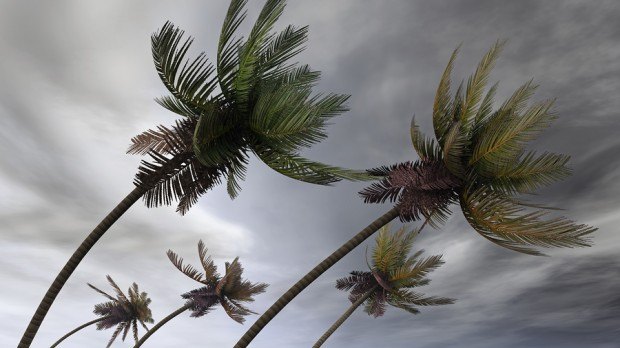There’s a lot of reasons people think 13 is an unlucky number. This year may add another. At least 13 storm systems should reach tropical strength and get a name in 2019, with five becoming hurricanes and two spawning winds of 111 miles per hour (179 kilometers) or more, Colorado State University said in its annual Atlantic forecast.
While the overall storm number is one above the 30-year average, it’s down from 15 last year. But that isn’t a reason for coastal residents to drop their guard.
“As we always say, it only takes one storm to make it an active season.” Phil Klotzbach, lead author of the study, said by telephone. “People have to prepare the same as always.”
An El Nino weather pattern will linger into at least September, and that’s helping to keep the hurricane season close to average, but there is no way of telling if one or more storms will become strong enough to cause destruction for the U.S., Mexico and the Caribbean.
Recent Destruction
The U.S. was hit by three major hurricanes in 2017, with the entire season causing about $215 billion in damage. Last year, hurricanes Florence and Michael ripped through the Carolinas and Florida with the total damage for the year reaching $51 billion, according to Munich Re.
The six month season begins June 1, when the warming Atlantic water becomes a nursery for the destructive storms often born from weather systems drifting off Africa. Atlantic hurricanes are closely watched because they can shake energy and agriculture markets, threaten coastal real estate, impact politics and leave long-lasting suffering for people and businesses in their wake.
This week, Congressional Republicans and Democrats haggled over disaster funding for Puerto Rico, still reeling from 2017’s Hurricane Maria. Politics aside, the perils faced by hurricanes are massive. In the U.S., more than 6.9 million homes, valued at $1.6 trillion, are at risk from storms, according to CoreLogic.
Across the South, many are still trying to recover from multiple strikes over the last several years. In Dillon County, South Carolina, residents were struggling to recover from flooding brought by Hurricane Matthew in 2016 when Florence brought a second deluge last year.
“It is an ongoing process,” said Kenneth Smith, Dillon County’s long-term recovery chairman. “It has been going on since Matthew. They got hit twice.”
April Forecasts
Nature’s cycles could rob the six-month 2019 season of some of its power, Klotzbach of Colorado State said. El Nino in the equatorial Pacific causes wind shear to develop across the Atlantic. Tropical storms and hurricanes can be ripped apart by wind shear with the tops of the storms being cut clear off.
Klotzbach also said that forecasts made in April are among the hardest for both storms and El Nino. From 2015 to 2018, Colorado State’s forecast underestimated the overall storms by 1 to 4 systems. At the same time, El Nino could fade.
“There is a lot of uncertainty about El Nino at this time of year,” Klotzbach said. “But I don’t see any smoking guns that is going to change that.”
Topics Catastrophe Natural Disasters Windstorm Hurricane Colorado



















 Report: Insurers Keen on Replacing Legacy Systems Seek More Agility
Report: Insurers Keen on Replacing Legacy Systems Seek More Agility  Insurers Face Business Interruption Claims After Global Tech Outage
Insurers Face Business Interruption Claims After Global Tech Outage  The Smart Workforce Pivot: Insurance’s Backdoor to Talent Acquisition
The Smart Workforce Pivot: Insurance’s Backdoor to Talent Acquisition  Middle Manager Is the Middle Child
Middle Manager Is the Middle Child 










